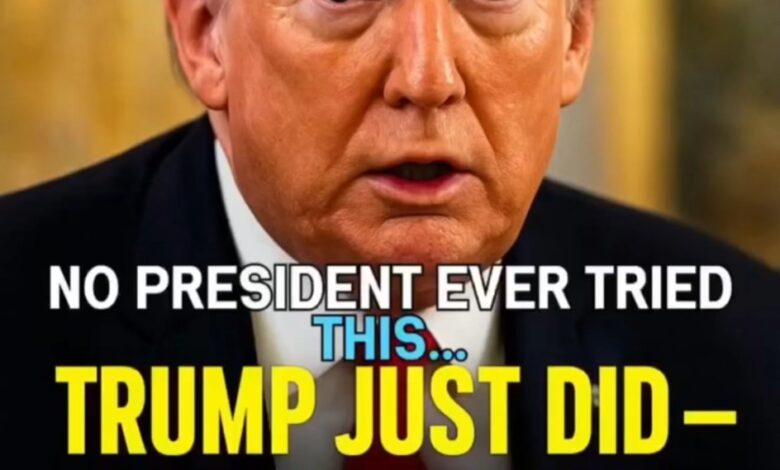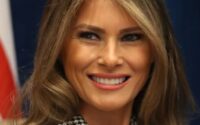Donald Trump has never been one to shy away from confrontation, but his latest outburst has drawn sharper lines than usual — this time not with political rivals, but with the press itself. During a press appearance earlier this week, the former president issued a chilling statement that immediately set off alarm bells among journalists and advocates of free speech alike. “Changes are coming,” Trump said, his tone cold and deliberate. “The press has been out of control. That’s going to change.”
The comment came after a tense exchange regarding reports on a failed military strike involving Iran — a decision that spiraled into global scrutiny. Outlets like CNN, The New York Times, and Reuters had dissected the event in detail, questioning both the intelligence behind the move and Trump’s reaction to it. Instead of defending his actions with facts or clarifying strategy, Trump turned his fire on the media, accusing them of “sabotaging America from within.”
For many, it was a familiar Trump moment — blunt, defiant, and intentionally provocative. But this time, the phrasing hit differently. “That’s going to change” didn’t sound like rhetoric. It sounded like intent.
A dangerous shift
Within hours, media watchdogs began responding. The Committee to Protect Journalists (CPJ) released a statement warning that Trump’s language marked “an escalation from criticism to threat.” One senior analyst wrote, “It’s one thing for a leader to call out bias; it’s another to openly signal punitive action against the press.”
The First Amendment — the foundation of American democracy — protects freedom of speech and the press precisely so journalists can hold power to account. When a president begins to question that principle publicly, it chills not only reporters but the truth itself.
Trump, however, has long positioned the press as an enemy. During his previous term, he frequently used phrases like “fake news” and “enemy of the people,” weaponizing distrust against major outlets. But until now, those were rhetorical tools — inflammatory, yes, but not overtly tied to a policy threat. His new tone suggested something more tangible, something resembling retaliation.
A pattern of hostility
This isn’t the first time Trump has waged war on the press. From barring specific reporters from White House briefings to suing media outlets for defamation, he’s built a political identity around attacking journalism. His supporters often echo his grievances, claiming mainstream media misrepresents conservatives.
But experts warn this hostility has broader consequences. “Authoritarianism doesn’t start with silencing the press,” said Dr. Laura Hines, a political historian. “It starts with convincing the public that the press doesn’t deserve to speak.”
Trump’s rhetoric — now amplified by sympathetic news networks and millions of social media followers — fuels that erosion of trust. And when a president implies that journalists will face consequences, the danger stops being abstract. It becomes policy.
A calculated move
Some analysts believe Trump’s words are strategic, not impulsive. “He’s testing the waters,” said Jonathan Reeves, a media law expert. “When Trump says ‘changes are coming,’ it’s not just a warning — it’s a way to gauge public tolerance. If people cheer instead of protest, that’s permission to go further.”
Indeed, several of Trump’s allies have already proposed reforms that would weaken press protections. In recent months, political commentators aligned with his circle have floated ideas such as tightening libel laws, penalizing “false reporting,” and even revoking broadcast licenses for “biased” outlets.
Such measures would dismantle one of the most critical checks on government power. Yet in a polarized environment where half the population distrusts the media, Trump’s framing — casting himself as the victim of a corrupt press — continues to resonate.
The broader implications
The danger of this kind of rhetoric isn’t limited to journalists. A free press serves the public. Undermining it damages everyone’s ability to know the truth, to question power, to hold leaders accountable. “If you control what people hear, you control what they think,” said Reeves. “That’s not democracy — that’s propaganda.”
It’s also worth noting that the U.S. is already slipping in global press freedom rankings. Organizations like Reporters Without Borders have downgraded the country in recent years due to growing hostility toward reporters and the normalization of threats, harassment, and disinformation campaigns.
Trump’s latest remarks risk accelerating that decline. And because they were made on camera, in front of the national press corps, they carry both symbolic and practical weight.
The media’s dilemma
How should the press respond when power threatens back? That’s the question now circulating among journalists across the country. Some advocate for restraint — refusing to give Trump’s provocations oxygen. Others argue silence only enables intimidation.
Veteran reporter Susan Kline summarized the challenge: “If we act outraged, we’re called hysterical. If we stay calm, we’re accused of being complicit. But pretending this isn’t dangerous would be a betrayal of our duty.”
Media organizations are already coordinating with legal defense groups to prepare for potential retaliatory measures. Independent journalists, too, are re-examining their digital security and funding models, anticipating a more hostile environment.
A test for democracy
This isn’t just another Trump controversy. It’s a moment of reckoning for American democracy. When a president declares war on truth, the question becomes whether the public will defend it.
The issue is not about liking or disliking Trump, or even agreeing or disagreeing with his policies. It’s about whether the freedom to question power remains sacred. History offers grim lessons: every society that lost its free press did so not in a single act of censorship, but through a gradual normalization of threats like this one.
As CPJ noted in its warning, “Words from power have consequences. When the press is silenced, corruption thrives. The next story no one can tell might be the one that mattered most.”
For now, Trump’s words remain just that — words. But in politics, language is never harmless. It shapes the culture, sets the tone, and defines what becomes acceptable. And when a leader speaks of silencing scrutiny, democracy itself starts to tremble.
Whether this moment fades or deepens into policy will depend not only on the media’s courage but on the public’s vigilance. Because the day Americans stop caring about the freedom of the press is the day they stop having one.


